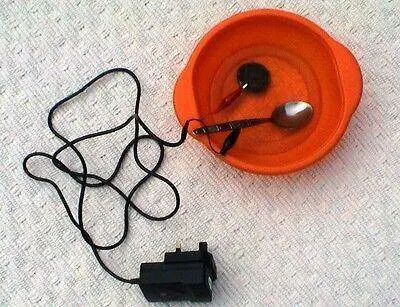Disclaimer: While using an electrical equipment can be dangerous, electrolysis is a common method of cleaning ancient metal objects, especially coins.
Using safety gear, such as goggles and latex gloves, and working on such a device in a well-lit, ventilated environment are recommended. Despite the extremely low risk of electrocution, it is never a good idea to use any electrical equipment carelessly.
The expedited method of cleaning coins is electrolysis.
Using this simply fabricated device, you can complete tasks that would often take months with oil soaks in just minutes (or seconds!).
Naturally, the additional power increases your chance of damaging your currency.
Even with caution, it is possible to wind up with a slug on a coin that was previously dirty but had a lot of potential.
You are taking a chance that the core underlying the coin is in good condition because electrolysis removes the patina of the coin. Sometimes the coin itself is the patina.
 You first need an old power adapter with a voltage range of 6 to 12 volts.
You first need an old power adapter with a voltage range of 6 to 12 volts.
Larger voltages don’t improve the cleaning process’s efficiency, but they do raise the risk of electrocution.
The plug end must be cut off, the two wires must be separated, and the jacket must be peeled off to reveal the copper.
Twist the wires and fasten them to metal clips if any are available.
Radio Shack sells a dozen copper-plated tiny alligator clips for about $3.
Get a small plastic bowl, set it aside.
Add salt and fill with water to the depth required to clean the coin you’ve chosen.
Just add a few spoons’ worth of salt; you don’t need to weigh it out.
Connect the power supply, then keep the two clips apart. If they come in contact, the adapter will short out and stop working.
To determine which clip fizzes, submerge the clips in the saltwater.
 The end to which you will attach the coins is this one. A metal object should be fastened to the other clip.
The end to which you will attach the coins is this one. A metal object should be fastened to the other clip.
Choose a tiny, controllable object to begin, such as a key or spoon. Avoid using copper or brass items because they don’t work very well.You now have an electrolysis kit.
Once that the clips are secured, insert both of them, and your coin should begin to fizz.
Let the penny in for anything from 30 seconds to several minutes, depending on how crusted over it is.
The coin should be vigorously fizzing.
Less is fine; it will just operate more slowly.
Simply add additional salt or move the two electrodes (the clips) closer together without actually touching if you want the action to pick up.
Remove the coin, then scrub it with a toothbrush that has been dipped in liquid soap.
The coin should begin to come clean if you’ve kept it in for a sufficient amount of time, but it probably needs to undergo more electrolysis.
Electrolysis may not be able to remove really difficult deposits, which means they must be manually removed using a pick or knife.
 Finally, you’ll see that the water quickly becomes contaminated.
Finally, you’ll see that the water quickly becomes contaminated.
The anode, which is dissolving into the water, is the main cause of this rather than the coin.
Every so often, you’ll need to refill the water, and after the anode wears out, so will it.
